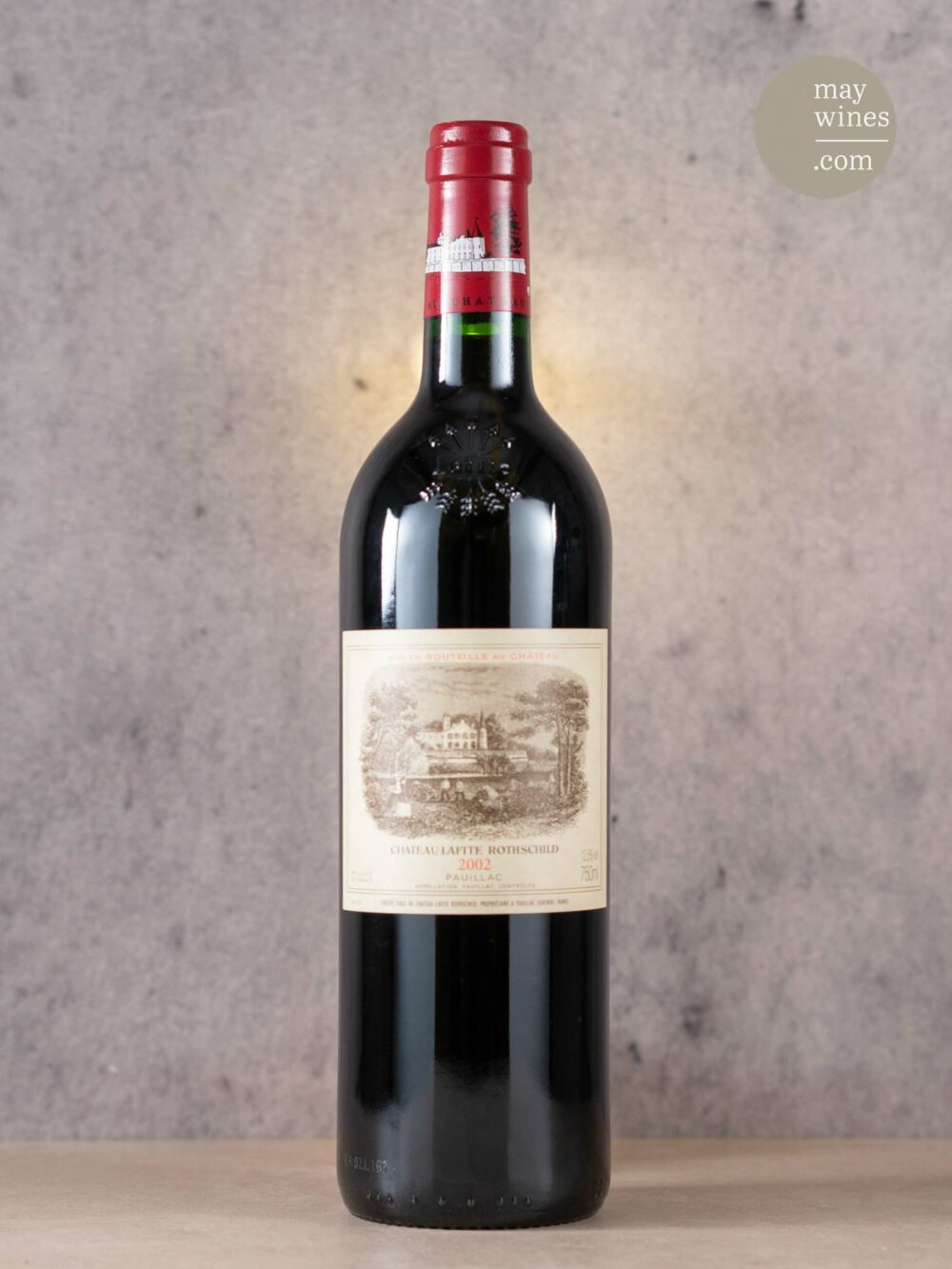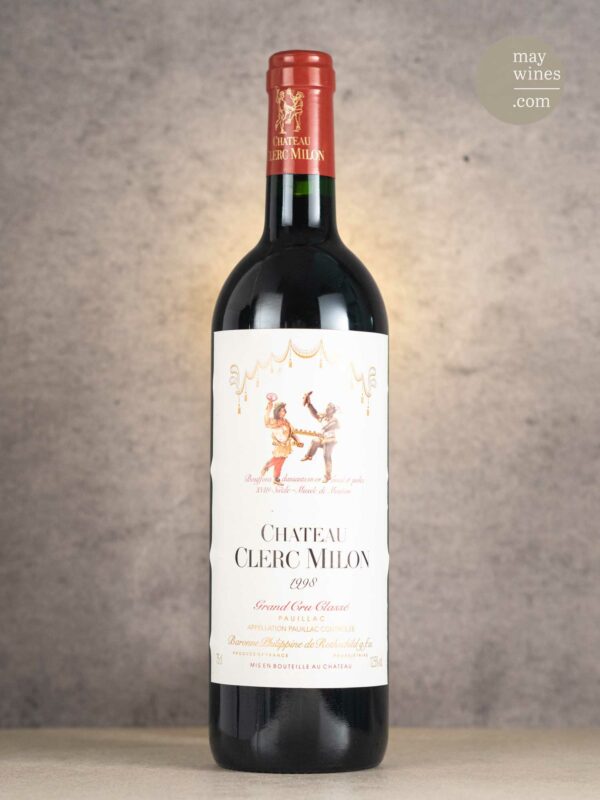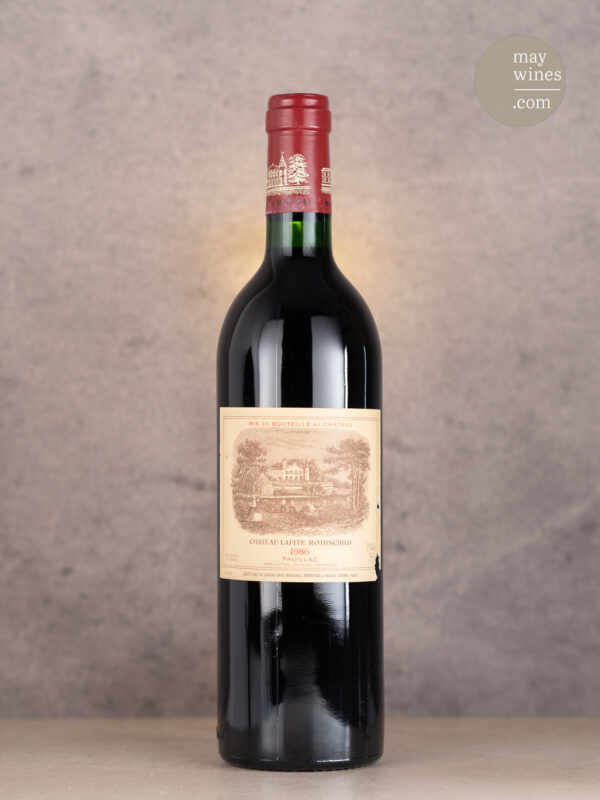Château Lafite Rothschild
Das herrschaftliche Schloss in der AC Pauillac mit seinen passend weinrot gestrichenen Fensterläden hat in seiner Historie schon viel gesehen. Wenn man heute in den Genuss kommt, dieses Top-Gewächs zu probieren, trinkt man mit jedem Schluck bewegte Geschichte mit: Gründung im letzten Drittel des 17. Jahrhunderts, 1716 durch Erbschaft an Familie Ségur gelangt, der auch Latour gehörte. Enthauptung des nächsten Besitzers, anschließend Konfiszierung des Gutes als öffentliches Eigentum. Es folgte der Verkauf an ein holländisches Konsortium, das Weingut wurde von einem Getreidehändler übernommen, der die Armeen von Napoleon belieferte. Weitergabe an eine Ehefrau, später Verkauf an einen Londoner Bankier. Übernahme durch die wahre Eigentümerin, die allerdings ohne Nachkommen blieb. 1868 schließlich Verkauf an den Pariser Bankier Baron James de Rothschild, der noch im gleichen Jahr starb. Seit damals ist das wunderschöne Anwesen aber im Besitz der Familie Rothschild, die heute knapp 180 Hektar Weingärten bewirtschaften. Die Adelung des Weinguts zu einem der (damals noch) vier Premier Crus erfolgte übrigens 13 Jahre vor der Übernahme durch Familie Rothschild.
All wines from Château Lafite Rothschild
All vintages of Château Lafite Rothschild
Bordeaux
„Am Wasser liegend“ fiel den Römern zum heutigen Bordeaux ein und nannten das Gebiet deshalb „Aquitanien“. Seine Haupt- und Hafenstadt trägt den gleichen Namen wie das 100.000 Hektar große Weinbaugebiet von Weltruhm: Bordeaux oder auf französisch Bordelais. Vor und entlang der Gironde, welcher sich aus den Flüssen Dordogne und Garonne speist, liegen die weltbekannten Weinbaugebiete Médoc, Haut-Médoc, Graves und rechtsufrig die Orte St. Emilion und Pomerol. Unser Herz schlägt seit vielen Jahren für die feinen Weine des Bordelais, wir sammeln schon seit 20 Jahren diese Weine, kaufen regelmäßig Liebhaber-Keller auf und konzentrieren uns auf die für uns großen Jahre (unter anderem 1982, 1985, 1986, 1989, 1990, 1996, 1998, 2000, 2005, 2009, 2010 und einige mehr) und die Top Winzer. Weine, die uns nicht schmecken, bieten wir auch nicht an.
Denkt man als Weinliebhaber an Bordeaux, fällt einem unweigerlich Cabernet Sauvignon ein. Warum gelingt die Sorte dort so besonders gut? Das Klima auf der Halbinsel links der Gironde, Médoc, ist das mildeste in ganz Bordeaux und genau hier gedeihen Cabernet Sauvignon-basierte Cuvées von Weltrang. Die Sorte braucht genau diese Bedingungen, um es mit einiger Regelmäßigkeit zur Traubenreife zu schaffen. Die Kiefernwälder schützen die Weinberge gegen die starken Atlantikwinde und mäßigen zudem die Sommertemperaturen. Da es, so nahe am Meer viel regnet, baut das typische Château zur Risikominderung mindestens drei Rebsorten an: zu Cabernet Sauvignon gesellen sich üblicherweise Merlot und Cabernet Franc, gelegentlich auch die später reifenden Sorten Petit Verdot und Malbec. Voilà! Je nach Uferseite dominieren Cabernet Sauvignon die Cuvée (linkes Ufer) bzw. Merlot (rechtes Ufer). Freilich gibt es vereinzelt Ausnahmen, aber das wäre die grobe Unterscheidung der zwei berühmtesten Ufer der Weinwelt.
All wines from Left Bank
Pauillac
Ihr Puls steigt, wenn Sie schwarze Johannisbeeren, Zedernholz, Zigarrenkiste und feuchter Waldboden hören? Dann ist Ihr Kenner-Gaumen vermutlich auf Pauillac eingetrunken. Willkommen im Cabernet Sauvignon Paradies! Der britische Weinkritiker Hugh Johnson sagte: „If one had to single out one commune of Bordeaux to head the list, there would be no argument. It would be Pauillac.” Gleich drei der fünf weltberühmten Premiers Crus beherbergt die 1.200 Hektar große AC: Lafite, Latour und Mouton-Rothschild. Lafite und Mouton teilen sich übrigens Weingärten am höchsten Plateau von Le Pouyalet, ganze 30 Meter hoch. Pauillac ist aber auch die Herkunft einer Menge weiterer interessanter Weingüter: 2ème crus Pichon-Comtesse, Pichon-Baron, 4ème cru Duhart-Milon, 5ème crus Pontet-Canet und Lynch-Bages, um nur einige zu nennen. Cabernet Sauvignon dominiert die hocheleganten Cuvées. Tiefgründiger Kies lässt Wasser auf der fast unmerklich welligen Topographie perfekt drainagieren, und das lässt die Rebsorte zu Weltweinen gedeihen.
All wines from Pauillac




